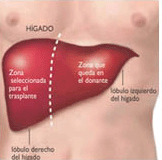A more benevolent treatment for patients with liver transplants

In the 80s the university hospital Vall d'Hebrón was the first hospital in Spain to carry out a liver transplant. Since then, the team of research doctors led by Dr. Carlos Margarit -who passed away recently-, has followed up the clinical course of this operation. Results suggest a new type of treatment: the elimination of steroids due to their aggressive side effects.
Steroids have formed part of all the guidelines on the use of immunosuppresants in the transplant of solid organs. They have been used both in induction and in the first stages of post-transplant, such as maintenance. In high doses, they have been and still are the treatment of choice in cases of acute cellular rejection. Nevertheless, the adverse effects of steroids are well known: diabetes, hypertension, dislipemia, osteoporosis, dermatological changes, etc. Hence, the new tendency towards avoiding the use of steroids as immunosuppresants. With the discovery of powerful immunosuppresants such as Tacrolimus, Neoral Cyclosoprin, Rapamicin, etc, many authors have tried to apply short courses of steroids, then eliminating them early at 15 days in 3 first time post-transplant patients. Very few authors have gone further, by eliminating steroids totally as immunosuppresants from the first day of post-transplant.
The Hepatic Transplant Unit of the Vall d'Hebrón Hospital led by Dr Carlos Margarit Creixell, designed a pilot study in 1998, using only Tacrolimus as an immunosuppressor in monotherapy from the first day of hepatic post-transplant. This prospective and randomised study, a pioneer in its field, attempted to show that Tacrolimus is a sufficiently powerful drug to be used in monotherapy without any other associated drugs, from the first day of post-transplant. Additionally we attempted to show that the absence of steroids would avoid, in the patients under study, all the adverse side effects due to steroids, adverse side effects, which are also caused by drugs such as Tacrolimus and Cyclosoprin and which are worse when they are administered together The results of this immunosuppresant regime without steroids, was compared with the standard immunosuppresion treatment used in our centre based on Tacrolimus and steroids.
The aims of this study, carried out over a period of 2 years between October 1998 and September 2000, were to compare the effect and severity of rejection, the effect of adverse side effects and the survival rates of both groups.
As we were dealing with a pilot study, we only included 60 patients. The absence of steroids did not show any advantages in reducing adverse side effects, although there was a tendency to reduce the side effects of arterial hypertension and diabetes in the monotherapy group. Neither did it show any advantages in the survival rates of patients nor in implants at 1-3-5 years (85 %-81 %-66 % with Tacrolimus vs. 84 %-78 %-73 % with Tacrolimus + steroids). The effect of rejection in the first 3 month of post-transplant was similar in both groups (39 % with Tacrolimus vs. 32 % with Tacrolimus + steroids), and there was even a tendency to severer rejections in the Tacrolimus group.
In our country almost the half of transplant patients are virus C (+) and the risks or benefits of the use of steroids in these transplant patients is a very controversial topic. In this study (20 patients in the Tacrolimus group and 15 patients in the Tacrolimus and steroids group) were virus C positive. The results comparing virus C patients in both groups according to treatment aim were similar. Nevertheless when we analysed the virus C patients according to real groups (patients who were given monotherapy throughout, from immediate post-transplant until the end of the follow-up at 5 years, and patients who received steroids either from the very beginning because they belonged to the steroid group, or later due to rejection), we could observe significant differences in the clinical reincidence of virus C in the transplant.
We must bear in mind that while 60 % of the patients in the monotherapy group could be treated without steroids, nevertheless there were 40 % of patients who, due to rejection, were eventually treated with steroids. Reincidence was lower and less severe in the real Tacrolimus monotherapy group. The evolution of hepatitis into cirrhosis at 3 years was also lower, both clinically and histologically. All cases of decompensated cirrhosis and all the deaths related to the reincidence of VHC were in the steroid group. The histology showed a higher degree of fibrosis in those patients who finally ended up being treated with steroids. The viral load from the first week to the first month post-transplant was significantly lower in the real steroid free group.
The results of this pioneering study indicated that the systematical use of steroids in the prevention of rejection was not essential, and so thereafter in the Vall d'Hebrón Hospital we proceeded to change our immunosuppresion standard for virus C (+) patients. The guidelines for Tacrolimus, without steroids, associated with other agents such as monoclonal Ac or Mophetilmicophenolate, may reduce the rate of rejection in virus C (+) patients to below 20 %, allowing 80 % of the patients to be totally free of steroids. This regime would assist, in the case of virus C (+) patients, in obtaining a more benevolent clinical treatment of the feared reincidence of virus C in transplants.
References
Article: Margarit, C; Bilbao, I; Castells, L; López, I; Pou, L; Allende, E; Escartín, A, "A prospective randomized trial comparing tacrolimus and steroids with tacrolim", TRANSPLANT INTERNATIONAL, 18 (12): 1336-1345 DEC 2005.


